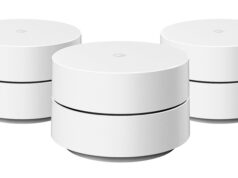Aprovado pela Comissão de Viação e Transportes, o Projeto de Lei 2070/15 prevê a obrigatoriedade da instalação de pontos de acesso gratuito à internet em terminais rodoviários, aeroportos, estações de trem e portos. Se vier a ser sancionado o PL, que ainda passará pela Comissão de Constituição e Justiça e de Cidadania, a conectividade deve chegar para passageiros até o final de 2017.
A exigência se aplica a cidades com até 50 mil habitantes. A tecnologia seria custeada com recursos públicos do Fundo de Utilização dos Serviços de Telecomunicações (Fust). O PL altera a Lei do Fust, no ponto de direcionamento dos recursos. A lei prevê atualmente a alocação de valores para implantar redes públicas de acesso à internet em bibliotecas, escolas, postos de saúde e áreas de fronteira.
Segundo a relatora na comissão, deputada Clarissa Garotinho (PR-RJ), a proposta segue a tendência de grandes cidades de disponibilizar internet…[MAIS]

























